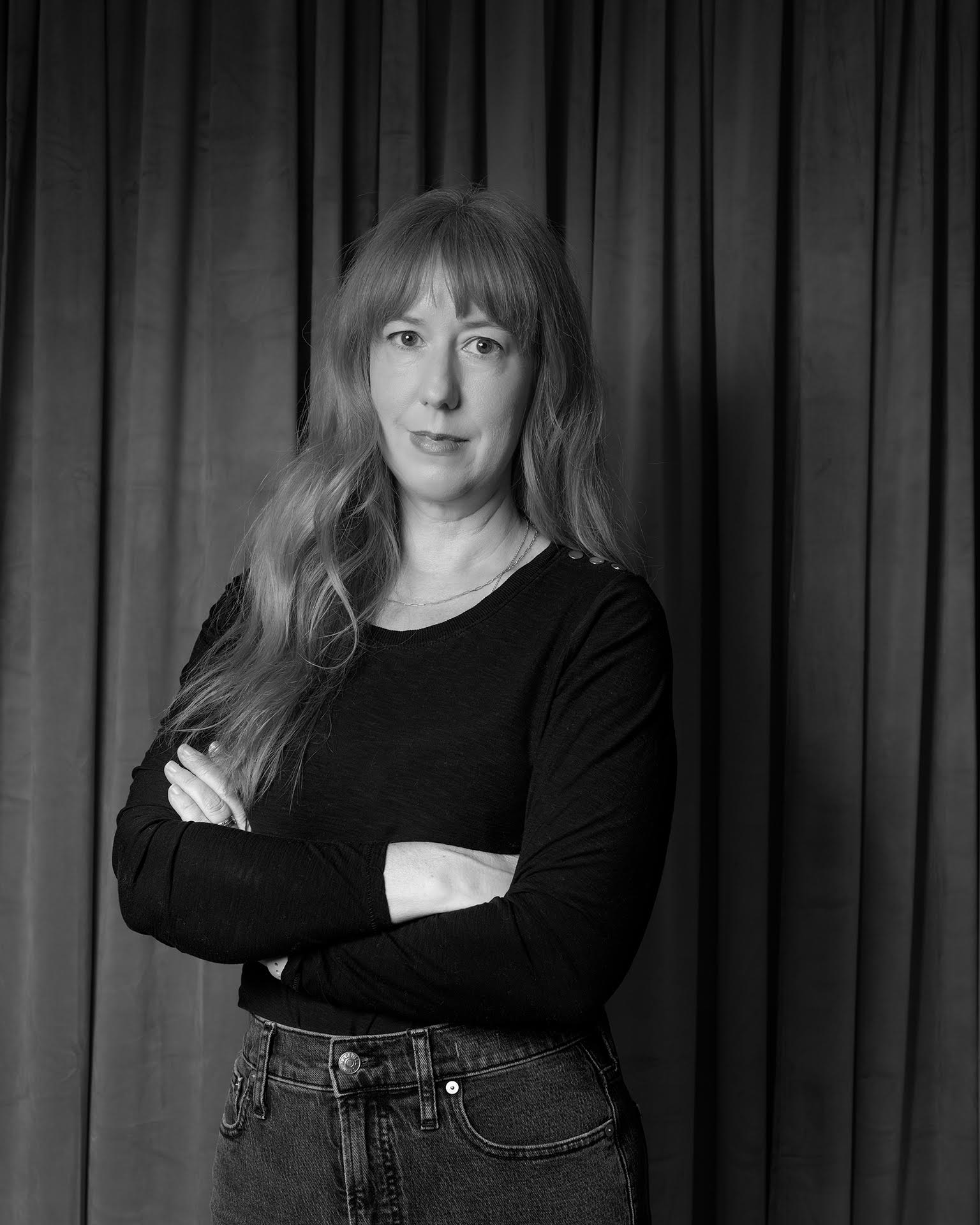Lynn Sanders-Bustle Constructs Living Mosaic for Linnentown with First Year Odyssey Students

Students and participants assemble the Linnentown Living Mosaic at the University of Georgia Memorial Hall Plaza on October 3, 2022. Photo courtesy of Sidney Chansamone, @sid.chansa
Last Updated
September 21, 2025
Published
October 27, 2022
Featuring
Lynn Sanders-Bustle
Academic Area
Art Education
On a crisp fall day in early October, blue and green painter’s tape crisscross the bricks outside Memorial Hall at the University of Georgia. A crowd of students and community members carry buckets of terracotta and glass, crouching in and around the marked-off area. Lamar Dodd School of Art Associate Professor Lynn Sanders-Bustle concentrates while she points with gloved hands and discusses the arrangement of an assortment of small objects.
At closer glance, the abstract design marked by the painter’s tape outlines a house alongside a creek beneath a sunny sky. A hop-scotch path, made up of large white tiles with black painted numbers, rises among triangular terracotta tiles toward the entrance of the house. Along the edge of the reflective sun, dark brown tiles with canary yellow painted letters reveal a poetic refrain. The house roof is adorned with a white rectangular tile painted with the phrase “We Were Happy!”




Linnentown: Past and Present
The mosaic scene depicts a joyful childhood in Linnentown, a once thriving community located in a twenty-acre area of Athens, Georgia bordered by Baxter Street, South Finley Street, and Church Street. Founded in the early 1900s, Linnentown boasted several dozen homeowners and many skilled laborers. In 1962, fifty Black families were forcibly removed from their homes through an urban renewal contract secured by Athens city government and the University of Georgia, supplanting Linnentown with student housing—Brumby, Russell, and Creswell Halls.
Present-day efforts to draw attention to this history and to seek redress for lost assets and culture have been championed by Linnentown descendants, including author of Giving Voice to Linnentown, Hattie Thomas Whitehead. Sanders-Bustle, an art education scholar specializing in socially engaged art, community-based art education, service-learning, and teacher preparation, worked with Thomas Whitehead for over a year to design and develop a commemorative mosaic honoring Linnentown.

Lynn Sanders-Bustle: Art Education and Social Practice
“Activist, public and community-based art that is participatory in nature has been part of my pedagogy and artistic practice since the early 2000s,” Sanders-Bustle said of her practice and scholarship. “Since coming to UGA I have facilitated community-based and school-based art projects involving community members, K-12 students and UGA grads and undergrads in interdisciplinary social practice projects related to local contemporary social issues.”
In the fall of 2019, Sanders-Bustle taught first-year students at the University of Georgia a First-Year Odyssey seminar focused on craftivism, which is the subject of a 2022 article she recently published for the International Journal of Art and Design Education titled “Negotiating the Art of Protest through Craftivism.”
The Evolution of the Linnentown Mosaic Project
The Linnentown Mosaic project has been central to Sanders-Bustle’s curriculum since fall of 2021. The local participatory art project was conceptualized through an interdisciplinary graduate course Sanders-Bustle co-taught with Associate Professor Jennifer Rice of the UGA Department of Geography — ARED 7230 | 8430 Honoring Linnentown through Public Art: A Social Practice Project.

On the structure of the course, Sanders-Bustle explains, “Key contributions of this group included providing design ideas for the construction of a wall on which the mosaic would be installed, the implementation of two community workshops, documentation, and social media and promotion.”
The class developed a three-part narrative for the mosaic, marking vibrant life in Linnentown before displacement, the fracture and erasure of the community, and current and future activism toward redress for Linnentown. The students in the course produced a documentary video chronicling the project and submitted sketches for the design to the Athens Justice and Memory Project, a resident-led coalition working with Athens-Clarke County government to examine the history of urban renewal in the community.
Remembering Linnentown, documentary video produced by students in the Fall 2021 course ARED 7230 | 8430 Honoring Linnentown through Public Art: A Social Practice Project
In the spring of 2022, Sanders-Bustle taught a course with undergraduate students in art education — ARED 4360: Secondary Curriculum in Art. Students in this class were tasked with designing K-12 curriculum on Linnentown, creating a resource guide for teachers, and teaching a series of workshops at Clarke Central High School, Cedar Shoals High School, and Clarke Middle School in which students would create and contribute clay pieces for the Linnentown Mosaic.
While the mosaic project was intended to serve as a permanent public installation alongside the student dormitories that replaced Linnentown, delays and administrative barriers have halted efforts. In the fall semester of 2022, Sanders-Bustle worked with first-year UGA students in a First-Year Odyssey seminar on the theme of art and activism to re-envision the project as a temporary, performative work, a ‘living’ mosaic, that would be assembled in situ and removed over a short period of time to demonstrate the emergence and removal of Linnentown.
“The idea for a ‘living mosaic’ came from my interest in rethinking the static nature of public art and in response to continued roadblocks related to building of a fixed public artwork on UGA’s campus,” Sanders-Bustle explained. “Instead, I wanted to create a temporal participatory work that through its performance would represent Linnentown as the thriving community that it was while also depicting its erasure and loss through its deinstallation.”
Activating the Linnentown Living Mosaic at Memorial Hall Plaza
On Tuesday October 3rd, students in Sanders-Bustle’s course staged a five-hour installation and deinstallation of the Linnentown Living Mosaic at Memorial Hall Plaza at the University of Georgia, inviting passersby, including Lamar Dodd School of Art Director Joseph Peragine and Athens-Clarke County Mayor Kelly Girtz, to observe and lay down pieces of tile, mirror, and found and handmade objects.

After the bustling, roving groups of participants completed assembling the scene, Thomas Whitehead stood beneath the shade of a tree and recited the names of Linnentown residents in the hushed afternoon. Each name Thomas Whitehead read aloud was accompanied by an individual in the crowd approaching the mosaic and ceremoniously removing a mosaic piece in recognition of the loss. After the last name was read, the group magnetically drew back onto the mosaic from its edges and began scooping up and packing away pieces back into buckets and boxes. Quicker than the work had been assembled, the house, the creek, the hopscotch path, and the sun disappeared.
The Linnentown Living Mosaic was a year-long collaborative artwork that navigated grief, activism, and education through new modes of remembrance. The project is ongoing and will evolve as Sanders-Bustle, Thomas Whitehead, and the captivated members of the UGA and Athens community come together to honor Linnentown.







